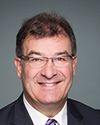Thank you, Julia.
Thank you to the chair and the committee. It's a real honour to be here today to speak with you about the Global Partnership for Education.
Last year GPE launched its new strategic plan that will see our partnership through to 2020. This strategic plan, as you heard from Julia, is aligned to SDG 4, the delivery of equitable and quality learning for all children and youth.
Our partnership is influenced by a number of guiding principles that place development effectiveness, mutual accountability, inclusiveness, and a focus on results at its centre and at the core of all we do. We are working to pursue these strategic goals and to measure our results against our objectives. Our strategic goals are improved and more equitable student learning outcomes through quality teaching and learning. We will measure our results in this area.
Second, we hope to increase equity, gender equality, and inclusion for a full cycle of quality education, targeting the poorest and most marginalized, including children in conflict-affected contexts.
Third, we aim to support educational systems to become both effective and efficient. This last November I presented our partnership's interim results to our board, and a full set of results will be presented in June of this year. As can be expected, the results show areas where we have both surpassed our targets and areas for increased attention. I'll highlight a few of these.
An additional 9.3 million girls are now in school across our partnership, due in part to GPE's support. Despite that, we know that we have equity concerns across the partnership, and this continues to be a core focus for our work.
I am very grateful to Canada for supporting GPE through gender institutional analysis to develop a gender equality strategy. We have now invested approximately $1.5 billion in our active grants to help improve gender equality across the partnership.
We are excited this year to be working with Plan Canada and other partners to introduce an approach to gender responsiveness in sector planning that highlights the importance of governments costing gender responsiveness in their schools and in their school system.
We are very pleased to see an ongoing rise in the rates of lower secondary school completion across our partnership. However, we note that in many of the poorest countries, primary completion rates are stagnating at around 80%, and this is of growing concern.
Half of GPE's disbursements go to fragile and conflict-affected countries in the partnership. As you know, about a third of the children who are out of school in the world live in a conflicted-affected context. For GPE, 63% of all refugee children live within the geographies of our 65 counties, so it's an important focus for us.
We have invested $2.2 billion in conflict-affected countries, including in Haiti, Mali, Central African Republic, Yemen, and Chad. Despite incredible barriers, the primary completion rate in these settings has risen substantially, from about 55% of all children completing primary school to 68%.
We have exceeded our milestone in relation to pupil-teacher ratios. As you know, the core of an education is a good teacher. In our partner countries, 29% of classrooms now have a pupil-to-teacher ratio of 40:1 or less. That's up from 25% only a year ago. We think this is an amazing result.
One of our most important results and areas of focus is in leveraging strong domestic financing for education in the partner countries. Every dollar that GPE invests should leverage improved concentration and focus from governments on improving their education systems. We know that to achieve SDG 4, low- and middle-income countries would have to nearly triple their spending on education.
The global standard for domestic financing of education is that governments allocate between 15% and 20% of their total public expenditures to education, with a particular focus on basic education. This is a requirement for the receipt of GPE funding. We have seen domestic financing improve across our partnership. Additionally, up to 30% of our grants are delivered as a results-based tranche. That is to say that governments must produce results in equity and learning, and show efficiencies in their system in order to receive that 30%.
As Julia mentioned, GPE invests in civil society and in multi-stakeholder accountability systems at the country level. We routinely support countries to have a sector review, a review of their education sector that brings all stakeholders to the table and at which there is careful tracking of results.
Since 2002, public expenditure on education in GPE partner countries has increased at a higher rate than in non-GPE partner countries; 72% of our partner countries increased public expenditure or maintained spending above 20% between 2014 and 2015, and 22 GPE countries allocated more than 20% of their budget to education. This is a very strong result for us.
We are committed to achieving real results in learning outcomes for all children through our focus on systems building, our focus on equity, and our focus on quality learning for all children. We welcome the ongoing partnership with the Government of Canada to achieve these results.
Thank you.




